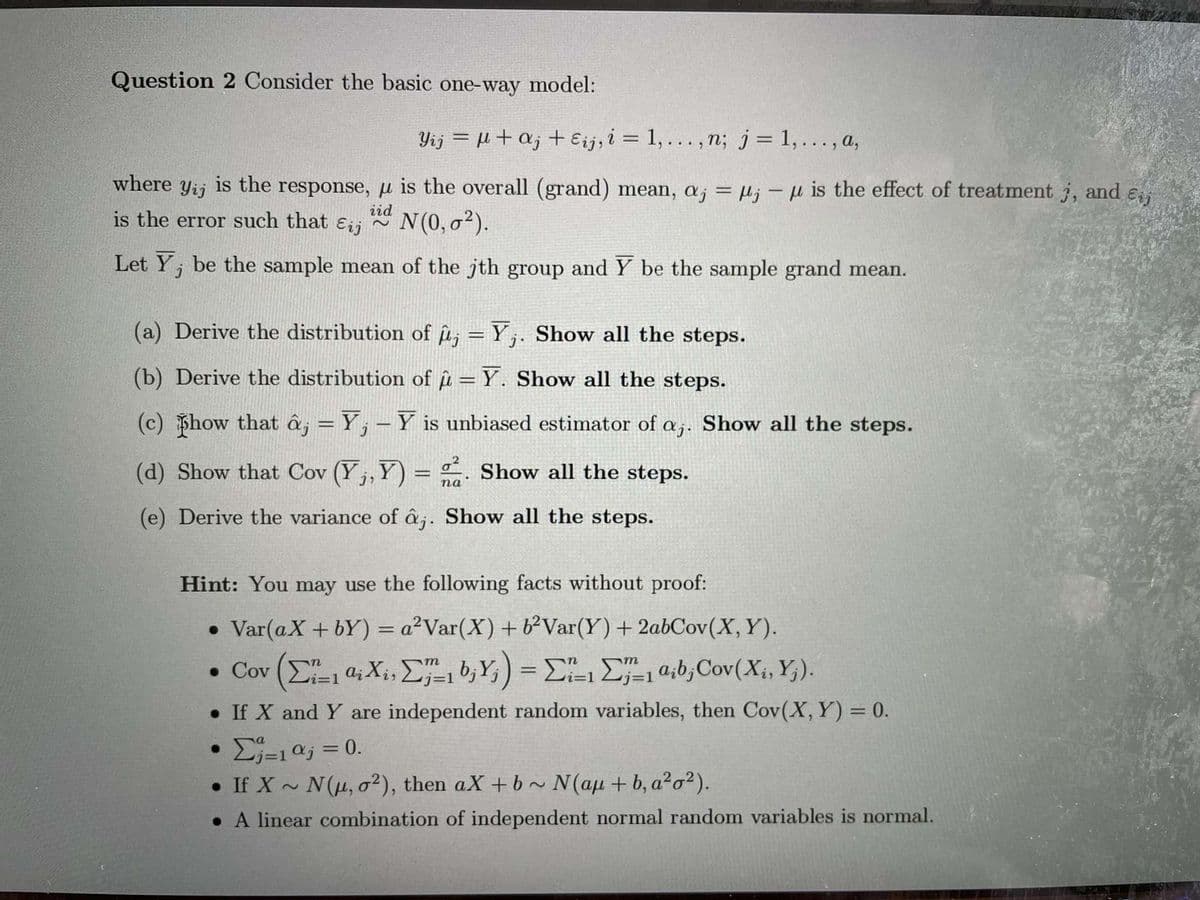Question 2 Consider the basic one-way model: Yij = H+ a; + E;ij, i = 1, . .. , n; j= 1, ..., a, where Yij is the response, u is the overall (grand) mean, a; = u; µ is the effect of treatment j, iid is the error such that ɛij N N(0, o2). Let Y, be the sample mean of the jth group and Y be the sample grand mean.
Question 2 Consider the basic one-way model: Yij = H+ a; + E;ij, i = 1, . .. , n; j= 1, ..., a, where Yij is the response, u is the overall (grand) mean, a; = u; µ is the effect of treatment j, iid is the error such that ɛij N N(0, o2). Let Y, be the sample mean of the jth group and Y be the sample grand mean.
Glencoe Algebra 1, Student Edition, 9780079039897, 0079039898, 2018
18th Edition
ISBN:9780079039897
Author:Carter
Publisher:Carter
Chapter10: Statistics
Section10.1: Measures Of Center
Problem 9PPS
Related questions
Question
Please answer 2d)

Transcribed Image Text:Question 2 Consider the basic one-way model:
Yij = +a; + Eij, i = 1,... , n; j= 1,..., a,
where
Yij
is the
response, µ is the overall (grand) mean, a; = µj – µ is the effect of treatment j, and e
%3D
is the error such that
iid
Eij
N(0, o²).
Let Y, be the sample mean of the jth group and Y be the sample grand mean.
(a) Derive the distribution of u; = Y;. Show all the steps.
(b) Derive the distribution of u = Y. Show all the steps.
(c) how that â¡ = Y; – Y is unbiased estimator of a;. Show all the steps.
(d) Show that Cov (Y,, Y) = . Show all the steps.
па
(e) Derive the variance of â;. Show all the steps.
Hint: You may use the following facts without proof:
• Var(aX + bY) = a²Var(X) + b²Var(Y)+ 2abCov(X, Y).
%3D
. Cov (Σ Q, Χ., Σ"b, Y) - ΣΗ Σ"0,0, Cov (X., ).
i=D1
• If X and Y are independent random variables, then Cov(X, Y) = 0.
• Ej=10j = 0.
• If X ~ N(u, o²), then aX + b ~ N(au + b, a²o²).
• A linear combination of independent normal random variables is normal.
Expert Solution
This question has been solved!
Explore an expertly crafted, step-by-step solution for a thorough understanding of key concepts.
Step by step
Solved in 2 steps

Recommended textbooks for you

Glencoe Algebra 1, Student Edition, 9780079039897…
Algebra
ISBN:
9780079039897
Author:
Carter
Publisher:
McGraw Hill

Glencoe Algebra 1, Student Edition, 9780079039897…
Algebra
ISBN:
9780079039897
Author:
Carter
Publisher:
McGraw Hill